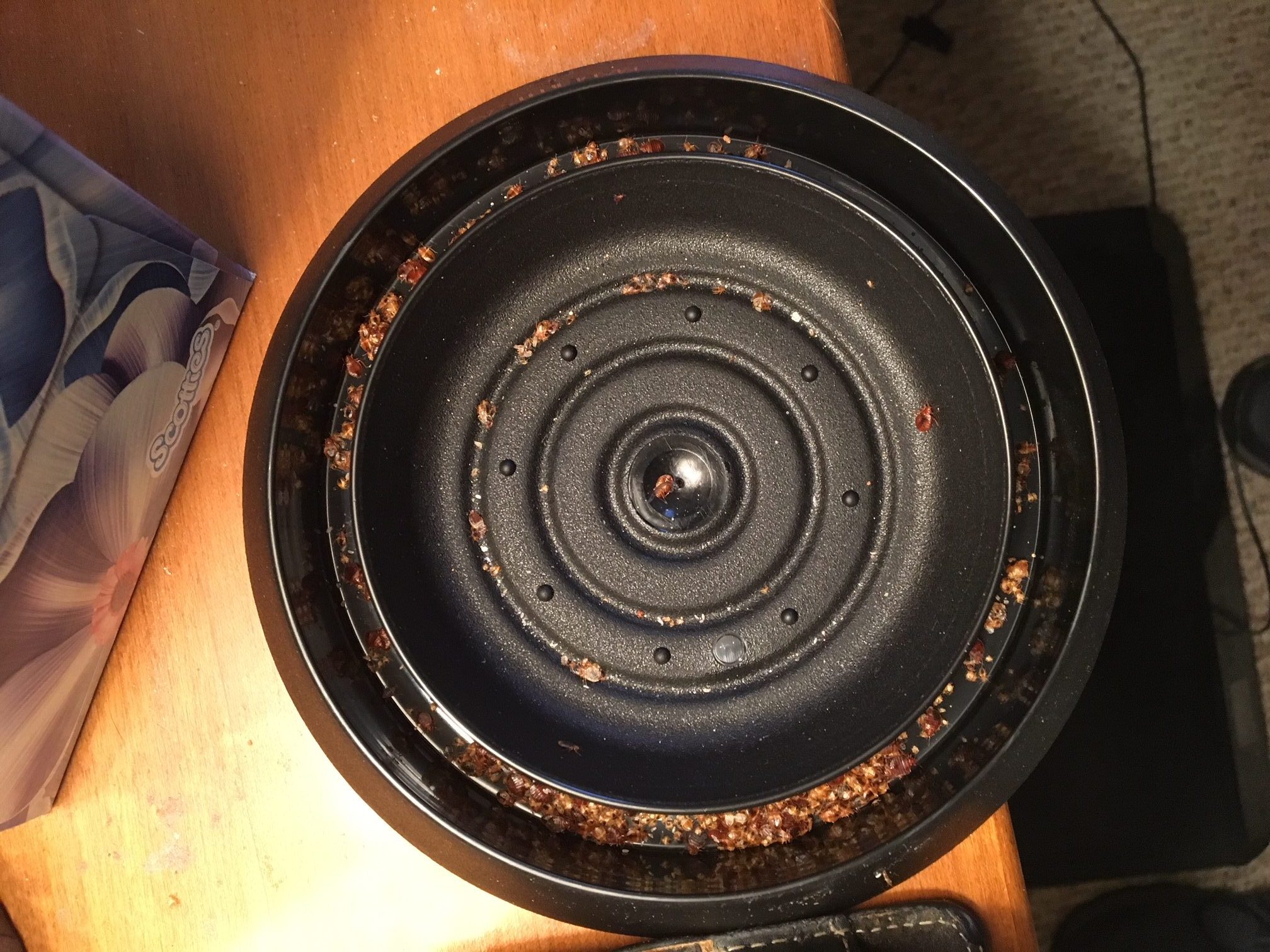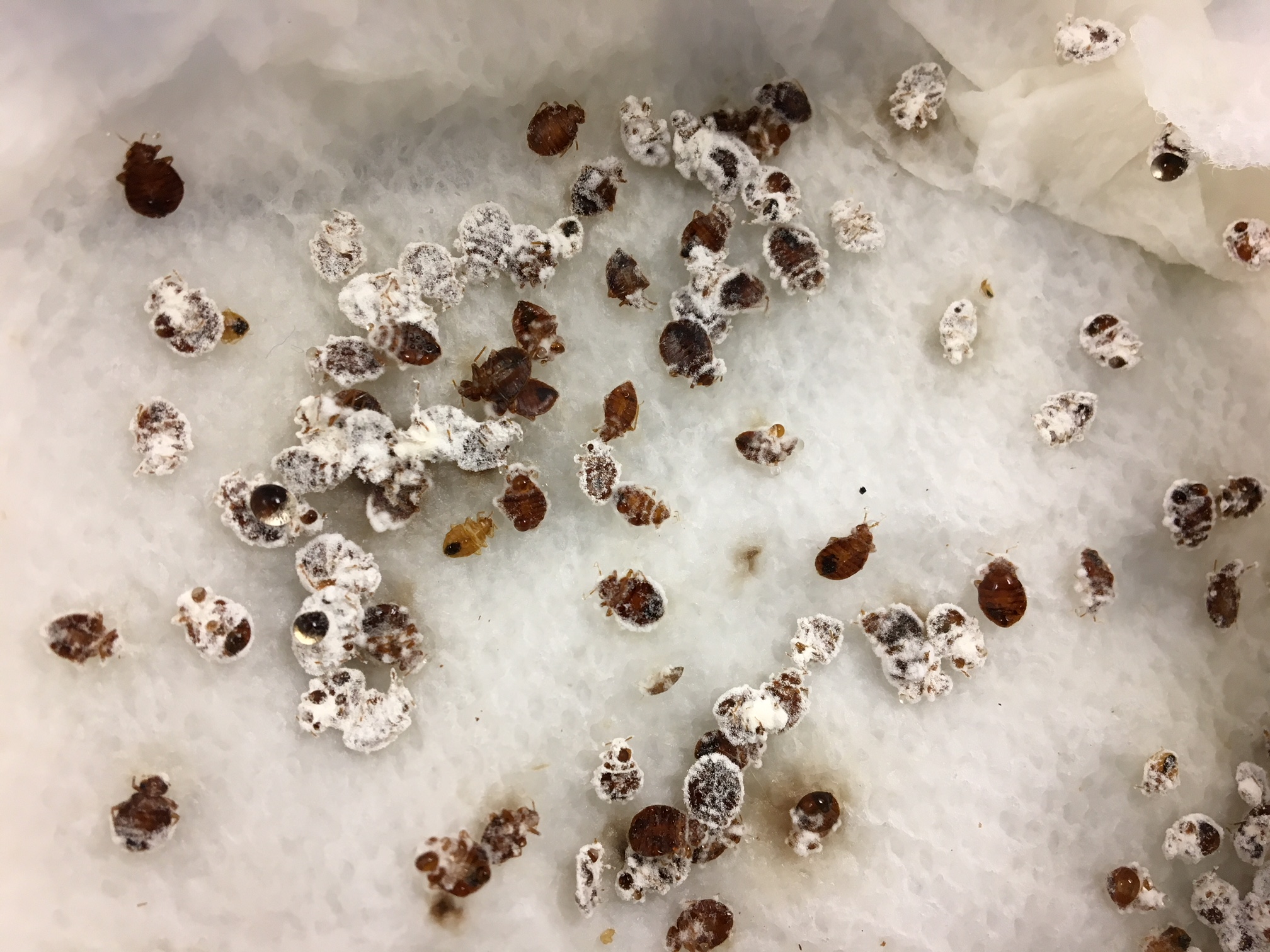Aprehend Field Trial in a Severely Infested, Single-family Home
Overview and Background
In November of 2017, ConidioTec introduced Aprehend® to the pest control industry. Aprehend®’s active ingredient is Beauveria bassiana, a fungal infectious agent that has been used for many years in agriculture and horticulture to assist in controlling various pests. A few years ago the research team at ConidioTec identified a particular strain of B. bassiana that appeared particularly virulent to bed bugs and began developing it as a biopesticde product, along with a specific spray delivery system for application of the fungal formulation.
Initial lab studies on the product appeared promising. However, the pest control industry may remember that fungal pathogens have been introduced to the market within the past 30 years with limited success. Therefore we wanted to conduct field trials on this product to confirm the efficacy reported from laboratory-based trials.
The following are a few details about the product:
- Active ingredient: Beauveria bassiana – fungal infectious agent (active ingredient)
- Application equipment is unique to the product – low-volume, low-pressure spray applicator
- Formulation contains petroleum distillates
- Respirators are required for all applicators
- Product should be applied at “a rate greater than one foot per second” as per label directions
- Cannot treat mattresses or bedding
- 4-hour re-entry interval is required for all residents
- Product cannot be exposed to temperatures in excess of 90°F for long periods (i.e. cannot be stored in parked vehicles)
To learn more about Aprehend® please visit: www.aprehend.com
Field Trial
In January, 2018, a single-family home in NJ was found with a severe bed bug infestation. The residents of the home indicated that they have dealing with the infestation for the past 3 years and tried several different treatment methods to solve the infestation with no success. Initial inspection identified severe infestations in both bedrooms and the living room as well as the dining room/entrance foyer between the living room and bedroom. In addition, bed bugs were found scattered throughout the home which included the kitchen, bathrooms and the basement.
The residents of the home indicated that they did not have the financial means to eliminate the infestation using a pest control company and agreed to allow Aprehend® to be used in their home as part of a program to evaluate the effectiveness of the product. No charge was associated with the application of the product.
For graphic representation of the infestation before treatment:
On February 8th, 2018, a large percentage of the bed bugs that were visible on the beds and upholstered furniture were removed using a vacuum and encasements were installed on the beds. In addition, SenSci BlackOut bed bug detectors were installed under the legs of all beds and couches in the home. On February 16th, all BlackOut’s were inspected and the bed bugs were collected and counted to establish and initial infestation count. After bed bugs were collected, Aprehend® was applied in a fashion consistent with label directions in the bedrooms, living room, dining area and entrance foyer. Only Aprehend® was applied in the home in an effort to identify the true impact of the product. On February 23rd, March 5th and March 23rd (7, 17 and 35 days after treatment) the BlackOut’s were inspected and bed bugs collected and counted to evaluate the effect of the product. On March 23rd data collection was discontinued and Aprehend was re-applied as part of an ongoing treatment plan to assist the residents with their bed bug problem.
Results
Results of the field trial were separated into rooms and are represented as the average bed bugs caught per day in interception devices (total number caught in parenthesis). It should be noted that many of the bed bugs captured by interception devices were dead upon inspection and may have been exposed to Aprehend and subsequently died due to that exposure. Therefore bed bugs captured by the devices should not be viewed as control/product failure but instead as a population count between services. Lastly, live bed bug activity was noted during the course of the study on the bedding and mattresses as those areas cannot be treated with Aprehend.
Living Room:
The living room was a traditional living room with a 4-seat upholstered couch and 2 recliners. The floor was carpeted. The couch was severely infested and the 2 recliners were found to be moderately infested.

Average number of bed bugs caught per day (total between collection dates in parenthesis)
Mom’s Bedroom:
The mother’s bedroom was the only room in the home with wood floors. This room also had the least amount of clutter and contained a queen bed, nightstand and 2 dressers. Upon initial inspection it was found to be severely infested and bed bugs found in all areas of the room.

Average number of bed bugs caught per day (total between collection dates in parenthesis)
Son’s Bedroom:
The son’s bedroom was the most severely infested in the home and the videos above were taken within this room. All areas of the room were found to be severely infested. The room contained a full bed, nightstand, 2 dressers and a computer desk and was carpeted.

Average number of bed bugs caught per day (total between collection dates in parenthesis)
Discussion
Overall a significant reduction in bed bug activity was noted in all rooms after Aprehend® application. While the percent reduction differed by rooms, an improvement in the bed bug infestation was noted in all rooms as well as the entire house. Some differences in room results may be explained by the content and construction of each room. The mother’s room had the most significant decline in bed bug activity which may be due to the simplicity of the furniture within the room, the wood floors making the product more available to the bugs and the fact that the mother was extremely cooperative during treatment and was regularly cleaning the room and laundering bedding. The living room noted a slightly smaller decline which may be due to the complexity of the upholstered furniture. The couch was severely infested and many bed bugs were found in hard-to-reach areas. Lastly, the son’s room saw the smallest decline in activity and this may be due to the staggering amount of bed bugs found within the room. This room was the most severely infested as well as the most cluttered.
Also it should be noted that live bed bug activity was noted throughout the study on the bedding and mattresses in both bedrooms. This live activity is due to the fact that these areas cannot be treated with Aprehend as per label directions. Within a treatment protocol these areas should be appropriately laundered as well as addressed with vacuums, steam, encasements and other tools used to eliminate bed bug activity on mattresses and bedding.
“Zombie” Bed Bugs – Still Walking and Soon to be Dead?
A few days to a few weeks after application of Aprehend®, bed bugs were noted in atypical locations within the home. The homeowner noted bugs wandering in larger than normal numbers in the kitchen and dining area. In addition to the observations made by the homeowner, a BlackOut bed bug detector was found capturing hundreds of bed bugs within the dining area. Almost all bed bugs within the detector were found to be dead and were transferred to a damp Tupperware container in an effort to identify if the dead bed bugs were exposed to Aprehend®. Four days after placement in the Tupperware container almost all of the dead bugs were observed to have white spores growing on their bodies. This technique can be used to determine if a bed bug has died as a result of exposure to Aprehend®. However, under normal circumstances, bed bugs will not grow white fungus. This only occurs if the bed bugs are placed on a moist paper towel and sealed in a box to maintain 100% humidity.


Through these observations and personal conversations with other professionals trialing Aprehend® it appears that exposure to the agent is causing bed bugs to wander away from predictable locations just prior to death. The exact cause of this behavior is unknown at this time but similar behaviors have been noted in other insects when exposed to infectious fungal spores.
The following video aired as part of the BBC’s series titled “Planet Earth”:
While the infectious fungal agent in the BBC video is different from B. bassiana, the behavior being observed in the field may be similar. Whether the bugs are sick and confused or intentionally wandering away from predictable locations, more research is needed to identify the exact cause of this behavior and the potential impact on bed bug infestations. This research is ongoing at Penn Sate University, and results will be reported here when available. In the meantime, professionals using Aprehend® should be aware of the behavior, mention that wandering bed bugs may be noted by homeowners and property managers and professionals should be using interception devices to assist in capturing these bugs before they are observed by others.
Final Conclusions
The results above suggest that Aprehend® may have a bright future in bed bug control but more research is needed to draw any significant conclusions on the exact impact it will have as a tool within a bed bug treatment protocol. This study was only performed in one home and the impact of the product may differ from bed bug infestation to bed bug infestation. In addition, Aprehend® should not be used as a stand-alone product and cannot be used on mattresses and bedding so alternative methods should be implemented to address those items (laundering, bed encasements and monitors). Lastly, monitors should be implemented throughout the home, especially in heavier infestations, to address any wandering bed bugs and intercept them before they are observed in unwanted areas.
